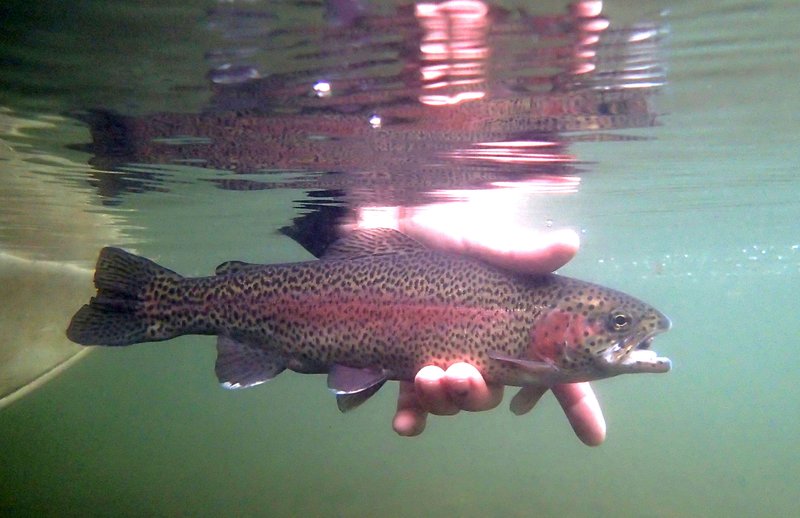BRANSON, Mo. -- Trout problems at Missouri's Shepherd of the Hills Hatchery near Branson have grabbed recent headlines, but water-quality issues similar to what's occurring at the hatchery are affecting Lake Taneycomo, too
Anglers were noticing dead trout and, in some cases, foul odors on the upper end of the lake for several weeks, even before conditions at the hatchery became dire. The main reason for Taneycomo's problem is low levels of dissolved oxygen in the water.
The cause can be traced to summer rain that caused sudden inflows into Table Rock Lake, the primary source of Taneycomo's water. Cooler temperatures should fix the situation. In the meantime, people who fish Taneycomo can help reduce this problem by minimizing the time they take to reel in and release fish.
Anglers can help reduce trout mortality by giving special attention to how they handle trout they catch. Land trout as quick as possible. Extended fights stress fish at any time of year, but can be lethal during times of low dissolved oxygen. Also, minimize the time spent netting and unhooking a trout. Finally, when the fish is unhooked, gently hold it under water until it gains equilibrium and can swim off on its own.
Blaming summer rain at Table Rock for dead trout in November at Taneycomo may seem like a stretch, but it provides insight into the annual water cycle at both waterways and also shows how the two lakes are connected.
Cold water released into Taneycomo from the depths of Table Rock allows trout to thrive in the upper end of Taneycomo during most of the year. However, beginning around mid-July each year, the cold water coming into Taneycomo from Table Rock routinely has diminished dissolved oxygen levels due to annual biological processes known as stratification that occur over the summer in Table Rock.
This summer, the dissolved oxygen levels in in the deeper water of Table Rock were further reduced by a combination of the decomposition of nutrients that were flushed into Table Rock by heavy rain in the area and high levels of water releases through Table Rock Dam that depleted the oxygenated water in the lake much faster.
This low-dissolved oxygen water is transferred to Taneycomo through flood-control Table Rock Dam and, unlike the water flowing into Shepherd of the Hills Hatchery, cannot be injected with liquid oxygen if power generation is not occurring. Therefore, dissolved oxygen levels drop to near zero during times of non-generation. Trout in Taneycomo begin to struggle and some die.
The lack of dissolved oxygen, combined with high amounts of nutrients in the water, is also the culprit for the foul odor some Taneycomo anglers report smelling. It should be noted some autumn trout mortality occurs at Taneycomo each year as a result of this process, but the high amounts of rain and water generation at Table Rock through the summer has worsened the situation this year.
As temperatures become colder, the upper oxygenated layer of water in Table Rock will cool, become denser, and sink. Once surface water temperature reaches the same temperature as on the bottom, Table Rock Lake will turn over, resulting in a more even distribution of dissolved oxygen throughout all layers of the lake. The release of this water into Taneycomo will help solve that reservoir's problems.
Sports on 12/01/2015

